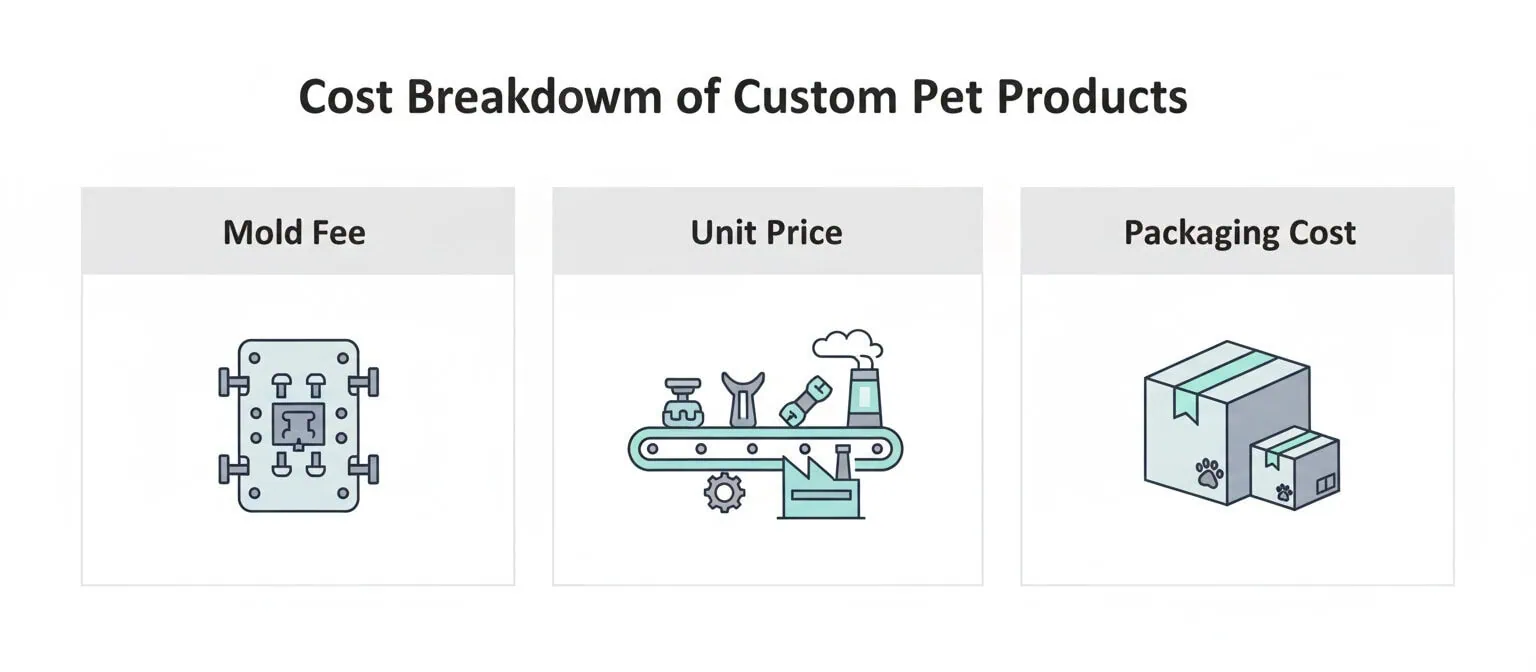Table of Contents
In recent years, pet owners have increasingly sought ways to ensure their furry companions remain comfortable and healthy. One innovative solution that has gained popularity is the self-warming pet bed, which harnesses the pet’s own body heat to create a cozy sleeping environment. At the same time, many well-known brands like KONG and Petsmart have also launched self-warming pet bed products.
This blog post delves into the mechanics behind self-warming pet beds, exploring their components and how they work together to provide a warm, inviting space for pets. We will also discuss the various types of self-warming beds available, their benefits, limitations, and how they compare to other heated bed options on the market.
What Is Self-Warming Pet Bed?
A self-warming pet bed is a type of pet bed designed to provide warmth and comfort to pets without the need for an external power source. These beds utilize the pet’s own body heat to generate and maintain a cozy sleeping environment. Self-warming pet beds are suitable for various pets, including cats and dogs, and come in different sizes and shapes to accommodate pets of different breeds and sizes.
How Do Self-Warming Pet Beds Work?
Self-warming pet beds work by harnessing the pet’s natural body heat and reflecting it back to the pet, creating a warm and comfortable sleeping surface. The beds achieve this through a combination of reflective layers, insulating materials, and self-sustaining warmth.

Reflective Layers
Self-warming pet beds feature a reflective layer, typically made of a metallic or mylar material, which lines the interior of the bed. This reflective layer acts as a radiant barrier, capturing the pet’s body heat and reflecting it back towards the pet. By reflecting the heat, the bed minimizes heat loss and maintains a consistent temperature.
Insulating Materials
In addition to the reflective layer, self-warming pet beds incorporate insulating materials to further enhance their heat retention properties. These materials, such as polyester fiberfill or foam, trap air and create a barrier against heat loss. The insulation helps to maintain the warmth generated by the pet’s body heat, ensuring a cozy sleeping environment.
Self-Sustaining Warmth
One of the key features of self-warming pet beds is their ability to create and maintain warmth without the need for an external power source. As the pet lies on the bed, their body heat is absorbed by the bed’s materials. The combination of the reflective layer and insulating materials then works to radiate this heat back to the pet, creating a self-sustaining cycle of warmth. This process continues as long as the pet remains on the bed, providing consistent and comfortable warmth.
Types of Self-Warming Pet Beds
Thermal Self-Warming Beds
Thermal self-warming beds utilize specialized materials that reflect and retain the pet’s body heat. These beds typically feature a multilayered design with a reflective inner layer, such as mylar or space blanket material, which redirects radiated body heat back towards the pet. The outer layers are made of insulating fabrics like fleece or faux fur, which help to trap the reflected heat and maintain a warm, cozy sleeping surface.
Orthopedic Self-Warming Beds
Orthopedic self-warming beds combine the heat-reflective properties of thermal beds with the supportive benefits of orthopedic foam. These beds are designed to provide targeted support for pets with joint issues, arthritis, or other mobility concerns. The self-warming feature helps to soothe aching joints and muscles, while the orthopedic foam contours to the pet’s body, alleviating pressure points and promoting proper alignment.
Self-Warming Mat Pads
Self-warming mat pads offer a portable, lightweight option for pet owners on the go. These pads are made with reflective materials that capture and radiate the pet’s body heat, creating a warm surface for them to lay on. They are often compact and easily foldable, making them ideal for travel, outdoor adventures, or use in crates and carriers.
Hooded or Cave-Style Self-Warming Beds
Hooded or cave-style self-warming beds provide an additional level of comfort and security for pets who enjoy burrowing or feeling enclosed while they sleep. These beds feature a partially or fully covered design, creating a den-like atmosphere. The interior of the bed is lined with reflective materials to trap and reflect body heat, while the exterior is made of soft, insulating fabrics for added warmth and coziness.
Benefits of Self-Warming Pet Beds
Energy Efficiency
Self-warming pet beds offer an energy-efficient solution for keeping pets warm and comfortable. Unlike electric heated beds that require a constant power source, self-warming beds rely on the pet’s own body heat to generate and maintain warmth. This means that no electricity is consumed, resulting in lower energy bills and a reduced environmental impact.
Safety
One of the primary advantages of self-warming pet beds is their inherent safety. These beds do not contain any electrical components or heating elements that could potentially malfunction or cause burns. The absence of wires and cords also eliminates the risk of pets chewing on them, which could lead to electrical shocks or other injuries. Self-warming beds provide a safe and worry-free option for pet owners.
Comfort and Versatility
Self-warming pet beds are designed to provide optimal comfort for pets. The reflective layers and insulating materials work together to create a cozy and inviting sleeping surface. These beds are available in various sizes and shapes to accommodate different pet breeds and preferences. Additionally, many self-warming beds are portable and lightweight, making them easy to move around the house or take on trips, ensuring that pets can enjoy a familiar and comfortable sleeping environment wherever they go.
Health Benefits
Sleeping on a self-warming pet bed can offer several health benefits for pets. The consistent warmth provided by these beds can help alleviate joint pain and stiffness, especially in older pets or those with arthritis. The insulating properties of self-warming beds also help regulate body temperature, preventing pets from getting too cold during winter months. Furthermore, the sense of security and comfort provided by a warm bed can reduce stress and anxiety in pets, promoting better overall health and well-being.
Limitations of Self-Warming Pet Beds

Limited Temperature Control
One limitation of self-warming pet beds is the lack of precise temperature control. Unlike electric heated beds that allow owners to adjust the temperature settings, self-warming beds rely solely on the pet’s body heat. This means that the bed’s temperature will vary depending on factors such as the pet’s size, weight, and body temperature. Some pets may find the bed too warm or not warm enough, depending on their individual needs and preferences.
Not Suitable for All Climates
Self-warming pet beds may not be suitable for all climates or seasons. In extremely cold environments or during harsh winter months, the insulating properties of these beds may not be sufficient to keep pets warm. In such cases, an electric heated bed or additional heating sources may be necessary to ensure the pet’s comfort and safety.
Less Effective for Inactive Pets
The effectiveness of self-warming pet beds relies on the pet’s ability to generate and retain body heat. For pets that are less active or spend a significant amount of time sleeping, the bed may not warm up as effectively. Older pets or those with low body fat may also have difficulty generating enough heat to keep the bed warm, limiting the bed’s overall performance.
Durability Concerns
Some self-warming pet beds may have durability issues, particularly those with lower-quality materials or construction. The reflective layers and insulating materials can deteriorate over time, reducing the bed’s ability to retain heat effectively. Additionally, pets with destructive chewing habits may damage the bed’s outer fabric or inner layers, compromising its insulating properties and overall longevity.
Feature | Self-Warming Pet Beds | Electric Heated Pet Beds | Microwavable Pet Beds |
Power Source | No external power required. Relies on pet’s own body heat. | Requires an electrical outlet for power. | Requires a microwave to heat the bed. |
Safety | Safe for pets as there are no electrical components or cords. | Potential safety hazards due to electrical cords and heating elements. | Generally safe, but the bed may become too hot if microwaved for too long. |
Portability | Highly portable and can be used anywhere. | Limited portability due to the need for an electrical outlet. | Portable, but requires access to a microwave for reheating. |
Maintenance | Easy to maintain and clean. Most beds are machine washable. | Requires regular cleaning and maintenance of electrical components. | Requires periodic reheating in the microwave to maintain warmth. |











